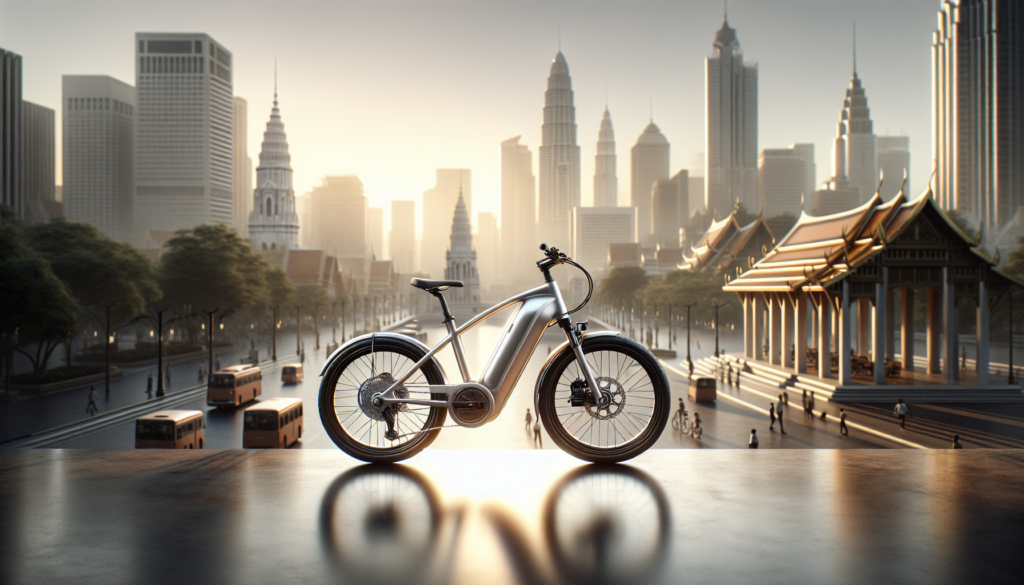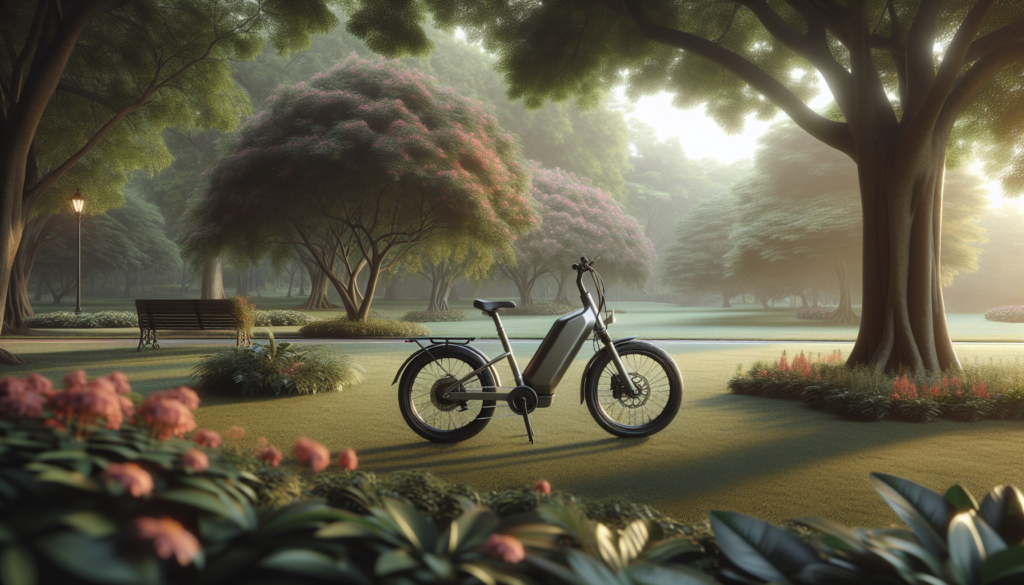In the rapidly evolving world of electric bicycles, the competition between models is fierce, with brands constantly improving technology and design to attract riders. Two such contenders in this market are the Xiaomi Ebike Himo Z20 and the ADO A20 Lite. While both bikes offer exceptional features, the ADO A20 Lite from EKO Life MY stands out with its lightweight design and efficient electrical assist modes that cater to various riding preferences. We will explore the specifications and capabilities of both models, delving into why the ADO A20 Lite deserves a closer look as a comparable option to the Xiaomi Ebike Himo Z20.

Overview of the ADO A20 Lite
The ADO A20 Lite emerges as a strong contender in the e-bike market, particularly when compared to the popular Xiaomi Ebike Himo Z20. With three distinct electrical assist modes, riders can easily select their preferred level of support, ensuring a customized experience tailored to their riding style. The ADO’s 36V 9.6Ah Li-ion battery provides a reliable range of approximately 60 kilometers, positioning it well for both city commuting and leisurely rides. Weighing only 16kg, it is notably lighter than the Xiaomi Himo Z20, making it a highly portable option that is easier to maneuver and store.
Furthermore, the ADO A20 Lite is built with a belt system, which offers a quieter and smoother ride compared to conventional chain systems, present in the Xiaomi Ebike. The mechanical disc brakes ensure safety and reliability, even in varying weather conditions. Priced at RM 3,699, it may be slightly higher than the Xiaomi Himo Z20, which retails at RM 3,099, but the value it offers through its lighter weight and advanced features makes it a formidable choice for those seeking efficiency and ease of use in an urban setting.
Comparison of Electrical Assist Modes
When it comes to electrical assist modes, both the Xiaomi Ebike Himo Z20 and the ADO A20 Lite boast impressive features that cater to various riding preferences. The Xiaomi Himo Z20 offers dual electrical assist modes, allowing riders to choose between Dynamic Sports Mode for an energetic experience and Cool Mode for a more relaxed ride. This flexibility makes it suitable for a wide range of terrains and user preferences. With a powerful 36V 10Ah Li-ion battery, the Xiaomi has a respectable range of about 60km, which is ideal for both short commutes and leisurely rides.
On the other hand, the ADO A20 Lite shines with its three electrical assist modes, providing enhanced versatility. This allows riders to switch between different levels of assistance based on their immediate needs, whether climbing hills or cruising on flat roads. Like the Xiaomi, it also has a 36V 9.6Ah Li-ion battery, achieving a comparable range of around 60km. What’s even more compelling is the lightweight design of the ADO A20 Lite, weighing only 16kg, which makes it easier to handle and maneuver compared to the Xiaomi’s 21.6kg frame. With these features, the ADO A20 Lite presents a strong case in the battle of e-bikes.
Battery Performance and Range Analysis
When comparing the battery performance and range of the ADO A20 Lite and the Xiaomi Ebike Himo Z20, both models showcase impressive specifications, but subtle distinctions highlight the superiority of the ADO A20 Lite. The ADO A20 Lite utilizes a 36V 9.6Ah Li-ion battery, providing a robust range of approximately 60km, suitable for an average day’s commuting needs.
Despite having a slightly lower capacity than the Himo Z20’s 36V 10Ah battery, the ADO unit operates efficiently due to its lightweight design, weighing only 16kg. This means less energy is required for propulsion, enabling smoother rides and enhanced performance, making it an excellent choice for urban cyclists and casual riders alike. Additionally, the ADO A20 Lite features three electrical assist modes, allowing riders to customize their riding experience according to their requirements or preferences while maintaining that sought-after balance between power and efficiency.
On the other hand, the Xiaomi Ebike Himo Z20, while equally capable with its 36V 10Ah battery and 60km range, generally leans towards weighted constructs that might affect handling for some users. Weighing in at 21.6kg, it doesn’t boast the same agility as the ADO A20 Lite. Both bikes support a maximum load of 100kg, but the combination of a belt system in the ADO model allows for quieter and smoother rides. The thoughtful design of the ADO A20 Lite makes it a strong contender against the Himo Z20, especially regarding battery performance and effective usage of electrical assist modes for a wide range of cycling experiences.
Weight and Load Capacity Comparison

When comparing the ADO A20 Lite and the Xiaomi Ebike Himo Z20, weight and load capacity are critical factors to consider for potential buyers. The ADO A20 Lite weighs a mere 16kg, making it a lighter option significantly easier to maneuver and transport. This lightweight construction is particularly appealing for commuters who need to carry their e-bikes on public transport or store them in small apartments. In terms of load capacity, both e-bikes can accommodate a maximum weight of 100kg, ensuring that riders can carry personal belongings without sacrificing safety or performance.
Conversely, the Xiaomi Ebike Himo Z20 tips the scales at 21.6kg. While slightly heavier, it boasts a dual electrical assist mode, which adds versatility for various riding experiences. However, for those seeking a more streamlined experience, the ADO A20 Lite’s lighter build offers a more agile ride while retaining comparable load capacity. With the ADO A20 Lite being a more portable and user-friendly option, it emphasizes the importance of weight in determining the best e-bike for urban commuting and recreation, making it a strong contender against the Xiaomi Ebike Himo Z20.
Technology: Chain vs. Belt Systems
When comparing the Xiaomi Ebike Himo Z20 and the ADO A20 Lite, one of the most notable distinctions lies in their respective systems: chain versus belt. The Xiaomi Ebike utilizes a chain system, which traditionally provides a reliable transfer of power from the pedals to the wheels. However, a chain system can require more maintenance due to factors like rust and wear over time. On the other hand, the ADO A20 Lite employs a belt system, which is known for its durability and lower maintenance needs. The belt is quieter, smoother, and less prone to stretching or wearing out quickly, making the ADO A20 Lite an attractive option for those seeking long-term performance without the hassle of frequent maintenance.
Moreover, the choice between these systems can also affect the overall riding experience. The belt system in the ADO A20 Lite is generally considered to deliver a more comfortable ride, with better shock absorption compared to a traditional chain. This becomes crucial during long rides, as it can enhance user comfort significantly. With similar performance specs, including both e-bikes equipped with a 36V battery offering a range of about 60km and a maximum load of 100kg, the ADO A20 Lite stands out with its innovative belt system that increases reliability and riding enjoyment for urban commuters. This innovation distinctly elevates its status in the competitive electric bike market, making it a worthy rival to the Xiaomi Ebike Himo Z20.
Braking Mechanisms: Mechanical Disc Insights
Additionally, the use of mechanical disc brakes across both models creates a level of reliability that riders look for and expect from electric bikes. As both the Xiaomi Ebike Himo Z20 and the ADO A20 Lite boast remarkable battery ranges of about 60km, the braking systems play a vital role in balancing speed and safety. Riders will appreciate the assurance that these mechanical disc brakes provide, especially on challenging routes or in adverse weather conditions. This aligns with their respective designs, where both emphasize durability and rider confidence. The consensus on braking performance showcases how the ADO A20 Lite stands out with its innovative features while still offering traditional mechanical disc brakes that enhance the overall riding experience.
Pricing and Value for Money
When it comes to pricing, the Xiaomi Ebike Himo Z20 is positioned at RM 3,099, offering solid features such as dual electrical assist modes, a powerful 36V 10Ah Li-ion battery, and a respectable range of about 60km. Weighing 21.6kg and being capable of carrying a maximum load of 100kg, it delivers good performance for city commuting and recreational rides. However, despite its competitive pricing, the ADO A20 Lite offers an even more attractive option at RM 3,699. Although it is slightly more expensive, the A20 Lite provides three electrical assist modes that cater to various riding preferences, enhancing value for different types of riders looking for adaptability in their e-bike experience.
The ADO A20 Lite features a lighter frame at just 16kg, making it easier to maneuver and transport. It boasts the same range of approximately 60km thanks to its 36V 9.6Ah Li-ion battery while still carrying the same maximum load of 100kg. Additionally, its belt system offers a quieter ride and lower maintenance needs compared to traditional chain systems. This combination of lightweight design, versatile assist modes, and value for money makes the ADO A20 Lite a compelling alternative, aligning it closely with the Xiaomi Ebike Himo Z20 on the pricing and performance spectrum.
Final Thoughts: ADO A20 Lite vs. Xiaomi Ebike Himo Z20

In the battle between the ADO A20 Lite and the Xiaomi Ebike Himo Z20, it’s clear that both e-bikes offer impressive features that cater to different riding preferences. The ADO A20 Lite stands out with its lightweight design at just 16kg, making it an attractive option for those who prioritize portability. Additionally, its three electrical assist modes provide versatility, allowing riders to tailor their experience according to their needs. While the price point is higher at RM 3,699, many users may find the enhanced capabilities and convenience worth the investment compared to the Xiaomi’s RM 3,099 price tag.
Moreover, the ADO A20 Lite‘s belt system offers a maintenance advantage over the chain system of the Xiaomi Ebike, resulting in smoother and quieter rides. Combined with a similar range of around 60km and a maximum load capacity of 100kg for both, the ADO A20 Lite ensures a reliable and enjoyable journey. Ultimately, whether you lean towards the well-established Xiaomi Ebike Himo Z20 or the innovative ADO A20 Lite, both options have their unique strengths that can satisfy any e-bike enthusiast.

Love how you started the blog, very engaging!
We’re glad you found the start of our blog engaging, Zayyan! We’re passionate about sharing our love for bicycles, ebikes, and escooters. Thank you for taking the time to read and comment on our blog. If you have any questions or would like to learn more about our products and services, please feel free to send us an email at [email protected] or give us a call at +60 3-7890 3042. We look forward to hearing from you!
A very inspiring post, can’t wait to read more!
Thank you so much, Kelly! We’re glad you found our post inspiring. If you have any questions or would like to know more about Eko Life Malaysia, feel free to contact us at [email protected] or +60 3-7890 3042.
This post is a great way to start the day, thank you!
You’re welcome, Mahesh! We’re glad our post was able to bring a bit of positivity to your day. If you have any questions or need assistance with anything, feel free to reach out to us at [email protected] or +60 3-7890 3042.